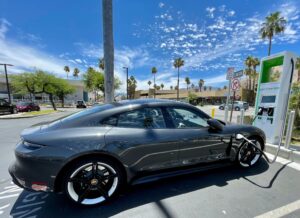The sudden surge in post-vaccination travel is colliding with a relative shortage of rental cars in US. About 43.6 million Americans hit the roads ahead of the Fourth of July travel frenzy, according to the American Automobile Association. And that means traffic, high gas prices, and the exacerbation of the US rental car shortage, as the rental-car companies sold a huge chunk of their fleets, probably hundreds of thousands of vehicles to survive the pandemic. Now they can’t get cars onto their lots fast enough to meet the new demand, especially with car factories stalled by semiconductor shortages globally.
US-Car-Rental-MarketTravelers’s report sky-high prices and sold-out dates even in non-beach destinations such as Kansas City, Houston and Memphis. Even travelers with reservations complain that they now sometimes show up and, with no cars on the lot, must wait for a car to be returned and cleaned before they can drive off. Rental car prices and demand for the July 1 to 5 holiday weekends were up over 70% compared to the same time in 2019, and in some locations, demand was up by 300%.
More than one of every three rental cars that were in service before the pandemic are no longer available. For customers, smaller fleets mean higher prices and longer waits. But for the rental companies, shedding car leases and cutting billions of dollars in planned purchases was the key to survival. Now that the economy is growing faster than anticipated and people want to travel, the companies are struggling to find enough cars.
The U.S. car rental market achieved a projected $23.4 billion in revenue for 2020, the lowest overall revenue since 2011. The 27.4% drop in total revenue for 2020 compared to revenue of $32 billion in 2019 is historically unparalleled, in fact much steeper than during the Great Recession when revenues only dropped 6.7% from 2008 to 2009. However, this precipitous annual drop only tells half the story. The two public companies — Avis Budget Group and Hertz Global Holdings — reported a cumulative drop in revenues of over 50% for the second and third quarters.
The industry averaged 1.98 million units in its overall fleet in 2020, a 12.4% decline over 2019. As a result, revenue per unit, per month dropped to $975 for the year, from $1,174 in 2019. However, it is expected that 2021 would be a great year for car rental players in US with increased travel spending by consumers and businesses opening up post lockdown resulting in high business travel requests.
Another after-effect which has been seen in the market owing to the increased consumer demand is rising demand for used cars in US. Currently there is a red-hot market for used-car sales in the US, which has been roiled by a once-in-a-generation set of circumstances brought on by the pandemic. Last year’s collapse of the rental car market, ongoing production issues in the new-automobile business and droves of buyer’s flush with stimulus checks have turned the used-car market upside down, leading to a shortage of inventory that has sent asking prices soaring to historic levels in certain states of US.
The US car rental & leasing market is primarily reliant on the behavior of the travelers. The continuous upsurge in the number of travelers has not only influenced the growth of the industry but also pushed the market players to introduce new business models. Newer market players such as Zipcar and BlaBlaCar have already launched groundbreaking business models in the past such as car sharing, and embraced technologies like telematics. Uber and Lyft are using mobile technologies and other devices in order to better meet consumers’ personal transportation requirements. These kinds of initiatives and business models are creating the environment for the disruption of the car rental industry. Moreover, emergence and aggressive development of autonomous vehicles will further evolve the car leasing and rental industry in U.S in coming years.
For more information and to gain access to the industry report, contact us at support@untappedmarkets.in




